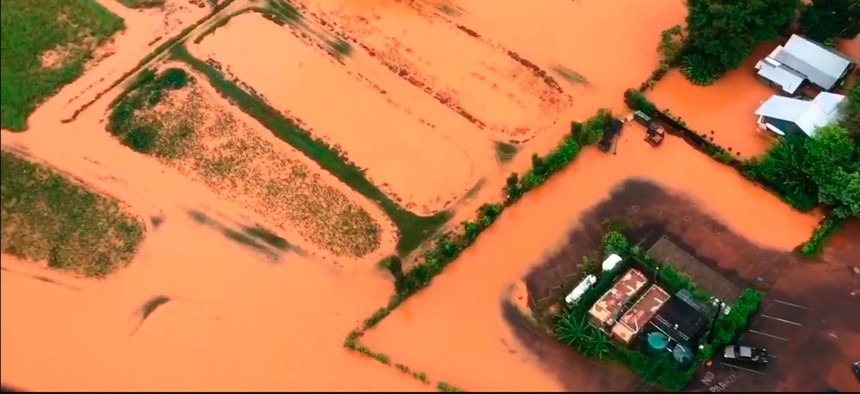41 States See Their Low-Income Residents Living in the Most Flood-Prone Areas

Flooding along Kauai's Hanalei Bay in Hawaii on April 15. U.S. Coast Guard via AP Photo
An effort to make the National Flood Insurance Program more affordable for them would necessite private-sector involvement, according to a new FEMA report.
Homeowners with the lowest median incomes tend to live in the highest flood hazard areas in 41 states, according to a Federal Emergency Management Agency report released Tuesday.
Of the households both inside and outside the Special Flood Hazard Area, or SFHA, flood insurance policyholders had higher median incomes than non-policyholders in every state, per “An Affordability Framework for the National Flood Insurance Program”.
The report further found 26 percent of NFIP policyholders in the SFHA could benefit from a program aimed at low-income households—those making less than 80 percent of the area median income—as could 51 percent of the uninsured.
“Any affordability approach will require funding,” Roy Wright, NFIP director, told reporters on a Monday afternoon conference call.
An affordability initiative funded solely with public money would “erode the financial position of the program,” Wright said, encouraging Congress to pursue a short-term solution, as part of NFIP reauthorization, limiting insurance premium rate increases for low-income households. The NFIP reauthorization deadline is the end of July, so an “initial affordability step” would buy Congress time to determine more fully who has the ability to pay, how much help they should receive and how much the federal government should pitch in, he added.
Private sector engagement is “imperative” moving forward, Wright said, pointing out the average assistance provided to Harris County, Texas households after Hurricane Harvey was $4,200 despite an average flood insurance claim of $120,000
According to the report, in 11 states where income inside the SFHA was lower than outside—Arizona, Connecticut, Georgia, Idaho, Maryland, Michigan, Minnesota, Montana, New Hampshire, North Carolina, Rhode Island—the difference was not statistically significant. The same was true for three states where income inside the SFHA was greater than outside: Delaware, Nevada and New York.
Only in Montana, Vermont and Wyoming—all states where flood insurance policyholders had higher median incomes than non-policyholders inside the SFHA—was the difference not statistically significant.
And only in Delaware and Idaho—states where flood insurance policyholders had higher median incomes than non-policyholders outside the SFHA—was the difference not statistically significant.
Dave Nyczepir is a News Editor with Government Executive’s Route Fifty and is based in Washington, D.C.
NEXT STORY: No Matter How the Supreme Court Rules, Don't Bank On an Online Sales Tax Boom






